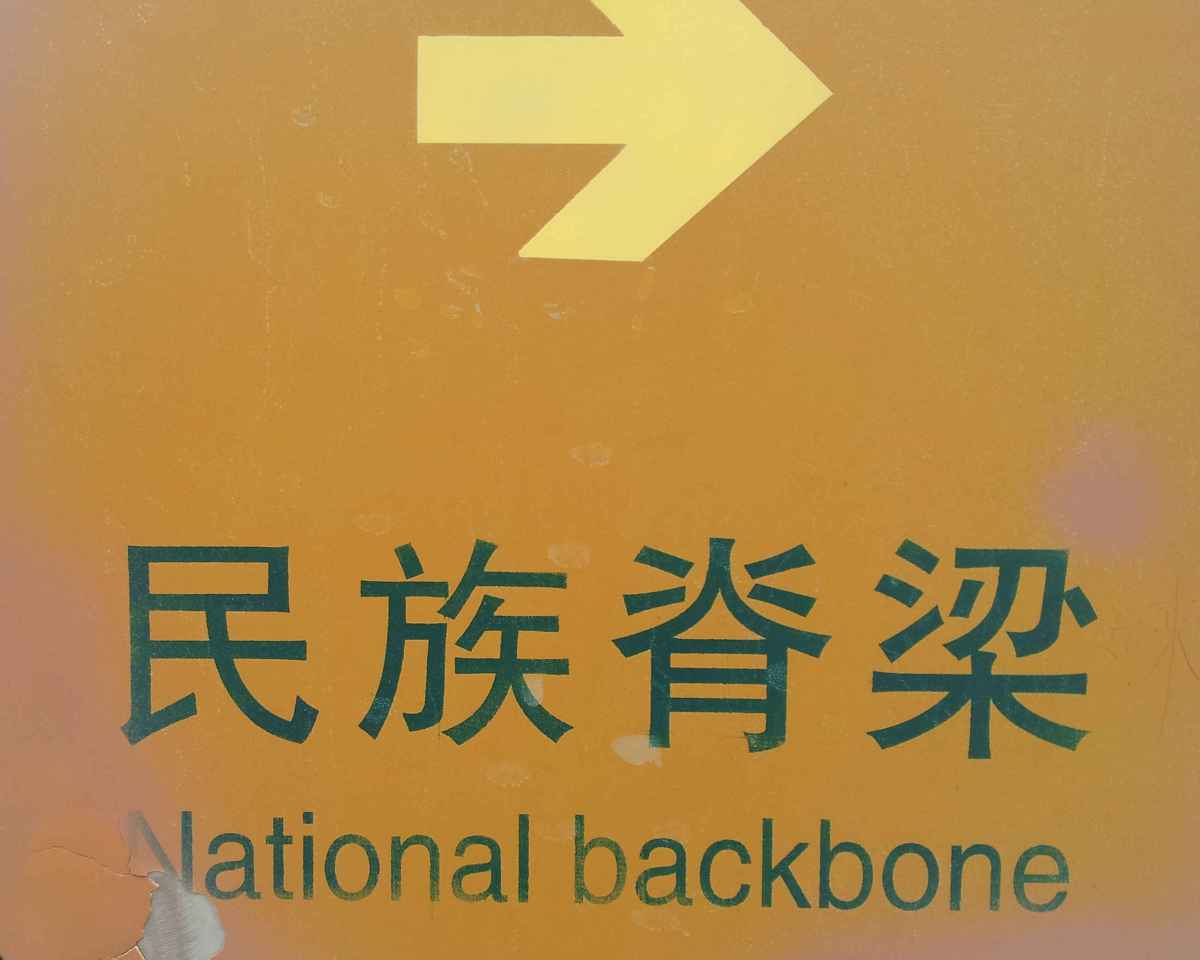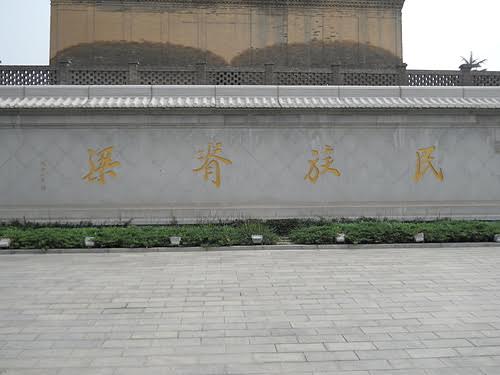"National backbone"
« previous post | next post »
I. J. Khanewala writes:
While visiting the tomb of the first emperor, I saw a sign in Mandarin which read minzu jiliang and translated as "National backbone". It left me quite mystified. Here's a photo of the sign:
Source ("Utterly lost in translation"). Any idea what it could mean?
Textual references to "mínzú jǐliang 民族脊梁" ("national backbone" — that's what GT, Microsoft Translator, and Baidu Fanyi all have, and it's not far off; there's not much else you can do with it, though it would sound better if worded as "backbone of the nation") abound in modern China and calligraphic representations of the phrase are in evidence in many public spaces. So it's not surprising that it would be in evidence at the Mausoleum of the First Qin Emperor.
"Mínzú jǐliang 民族脊梁" ("national backbone") is a variant of "中国的脊梁" ("the backbone / spine of China"), coined by the great author Lu Xun (1881-1936), whom we've mentioned many times on Language Log, in his article " Zhōngguó rén shīdiào zìxìnlì le ma 中国人失掉自信力了吗?" ("Have the Chinese People Lost Their Confidence?"). It was written during the period of the buildup to the Second Sino-Japanese War (July 7, 1937 to September 9, 1945) to encourage people not to lose strength and hope in their struggle against the invaders.
The most famous calligraphic exemplar of "mínzú jǐliang 民族脊梁" ("national backbone") is that by Zhao Puchu (1907-2000) at the Big Goose Pagoda in Xi'an, which is closely associated with the celebrated Buddhist pilgrim and translator, Xuanzang (fl. ca. 602-664). Zhao evidently meant his rendition of "mínzú jǐliang 民族脊梁" ("national backbone") as a tribute to the Tang dynasty Buddhist monk.
Here's a photograph of the wall on which Zhao's calligraphy is displayed, with a portion of the enormous pagoda looming in the background:
Geremie Barmé comments on Zhao's calligraphy thus:
It's an oddly anachronistic work. The calligraphy is by the pro-Communist state Buddhist layman Zhao Puchu 赵朴初. Zhao is celebrating the achievements of Xuanzang 玄奘. What mínzú 民族 ("nation") in the Tang, one may well ask?
Barmé is not the only commentator to question the appropriateness of Zhao dedicating the phrase that originated with Lu Xun during the period of the Second Sino-Japanese war to the Tang Buddhist monk, Xuanzang. Numerous posts online reveal that many people know about the association between Lu Xun and this phrase, but they are confused about why this phrase appears next to the Big Goose Pagoda in Xi'an. Some commenters opine that it is weird and awkward to juxtapose this phrase with the Big Goose Pagoda because they don't sense any convincing connection between the place and the phrase. Presumably, the phrase is also calligraphically displayed at the Mausoleum of the First Qin Emperor, which might similarly lead to the same kinds of questions as those raised about its appearance at the Big Goose Pagoda. The difference, however, is that Zhao Puchu was one of the most famous calligraphers of the second half of the twentieth century, so that — no matter whether fitting the context or not — Zhao's calligraphy, which may be seen at countless places all over China, seems justified by the sheer eminence of the artist.
Here's the phrase on a wall in Shaoxing, Lu Xun's hometown in Zhejiang Province:
There's little doubt that it perfectly suits the place and the person.
[Thanks to Yixue Yang and Jinyi Cai]


